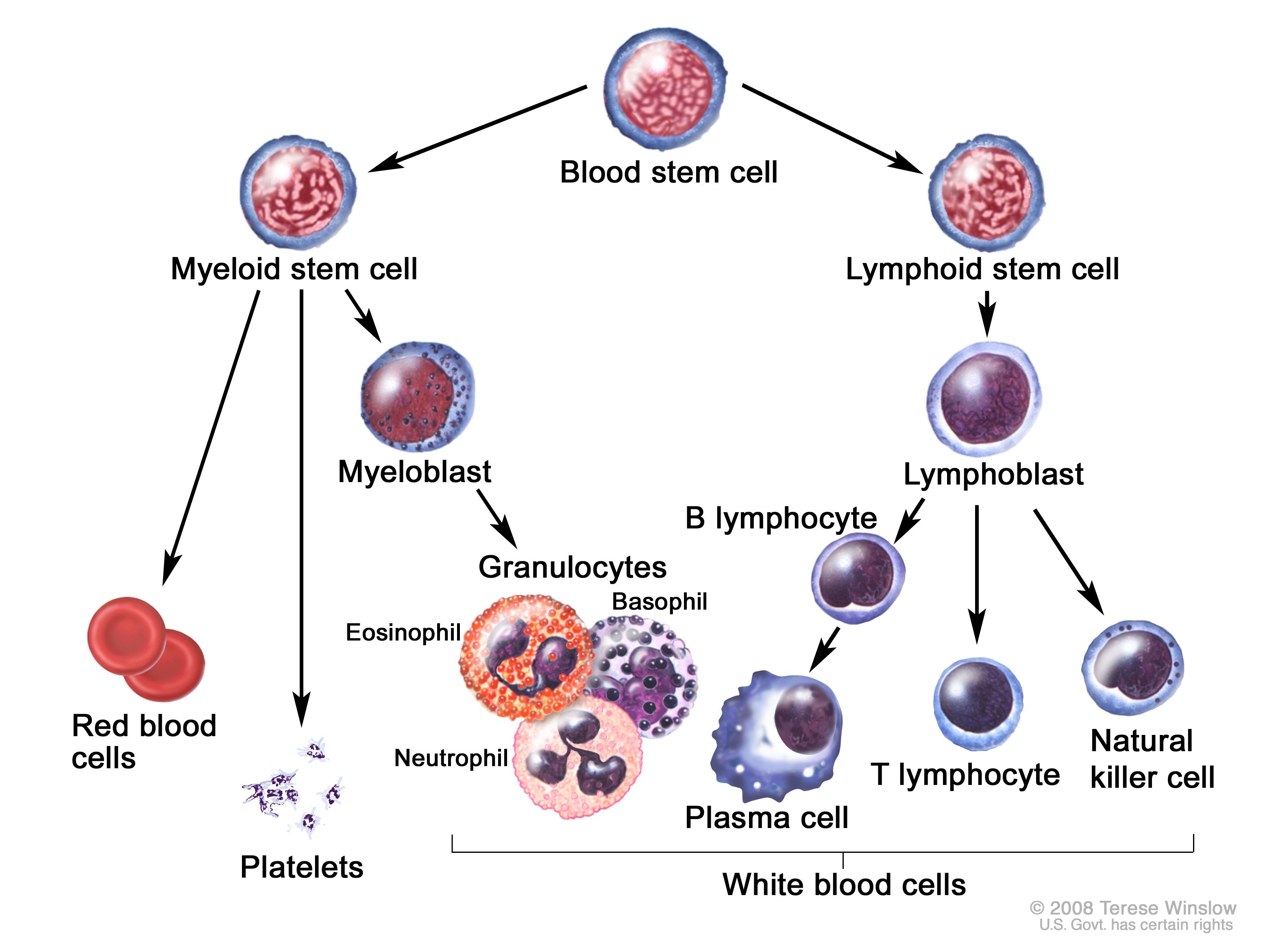Blood Cell
(Redirected from Blood cell)
Jump to navigation
Jump to search
A Blood Cell is a biological cell produces from a blood stem cell (through hematopoiesis).
- Context:
- It can range from being a Red Blood Cell, a White Blood Cell, or a Platelet.
- …
- Counter-Example(s):
- a Liver Cell.
- a Spleen Cell.
- See: Blood, Blood Plasma, Hematocrit, Flow Cytometry, Haemoglobin.
References
2020
- https://cancer.gov/publications/dictionaries/cancer-terms/def/plasma-cell
- QUOTE: ...

Blood cell development. A blood stem cell goes through several steps to become a red blood cell, platelet, or white blood cell.
- QUOTE: ...
2018
- (Wikipedia, 2018) ⇒ https://en.wikipedia.org/wiki/blood_cell Retrieved:2018-1-17.
- A blood cell, also called a haematopoietic cell, hemocyte, or hematocyte, is a cell produced through hematopoiesis and found mainly in the blood.
- Red blood cells – Erythrocytes
- White blood cells – Leukocytes
- Platelets – Thrombocytes.
- Together, these three kinds of blood cells add up to a total 45% of the blood tissue by volume, with the remaining 55% of the volume composed of plasma, the liquid component of blood. The volume percentage of red blood cells in the blood (hematocrit) is measured by centrifuge or flow cytometry and is 45% of cells to total volume in males and 45% in females.
Haemoglobin (the main component of red blood cells) is an iron-containing protein that facilitates transportation of oxygen from the lungs to tissues and carbon dioxide from tissues to the lungs.
Pulmonary Circulation- is the flow of blood from your heart to your lungs and back to the heart
- A blood cell, also called a haematopoietic cell, hemocyte, or hematocyte, is a cell produced through hematopoiesis and found mainly in the blood.